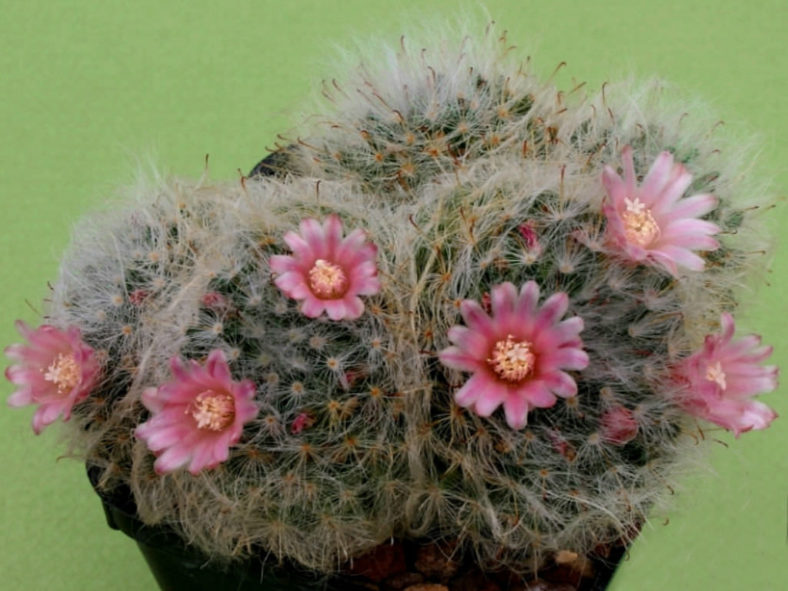Mammillaria bocasana, commonly known as Powder Puff Cactus, is an attractive cactus native to central Mexico. It is found between 5,400 and 7,500 feet (1,650 and 2,300 m) above sea level and grows on canyon walls, in volcanic rock, and in semi-desert environs, often under bushes of native plants. This cactus is protected from being collected in the wild in Mexico.
Powder Puff Cactus grows rapidly and produces small, round offsets, which cluster around the parent plant. The body of the cactus is blue-green, stocky, and made up of short stems that hug the ground. The entire plant is covered in silky, white hairs, which cover the reddish-brown spines (one of which is hooked). The flowers are small, ranging in color from white to yellow, pink, and red.
Growing Conditions and General Care
This cactus is only suitable for outdoor life in USDA Plant Hardiness Zones 9b to 11b. For gardeners in most zones, the indoor potted Powder Puff Cactus is the only option.
Powder Puff Cactus requires ample sunlight and warm temperatures. It is happy if temperatures are between 70°F and 80°F (21°C to 27°C) and it receives at least 8 hours of sunlight. During the winter, it becomes dormant and can be held in a dry, cool room. Exposure to temperatures between 60°F and 65°F (16°C and 18°C) helps encourage flowering in spring. Move the Powder Puff Cactus outside in summer.

The potting soil needs to be porous so it can drain well. Allow the soil to dry nearly completely between waterings, then water thoroughly. Never let the pots sit in the water. Suspend watering in the winter.
Fertilize Powder Puff Cactus in spring with a 5-10-5 liquid fertilizer. Continue to feed the potted plant in summer every month. Suspend fertilizer in fall and winter when the plant is dormant.
Additionally, be aware of specific pests, such as whiteflies and mites.
Repotting
This cactus prefers to be slightly pot-bound and only requires repotting every 3 to 5 years.
Propagation
Powder Puff Cactus can be propagated by seeds or offsets. Seedlings take a long time to form adequate plants, so the best way to start new plants is from division. The small offsets that cluster around the parent plant are easily pulled away. Lay the offset on the counter in a warm, dry location for one to two days to form a callus. Then, plant it in a cactus mix or sandy potting soil.
Source: gardeningknowhow.com
Links
- Back to genus Mammillaria
- Succupedia: Browse succulents by Scientific Name, Common Name, Genus, Family, USDA Hardiness Zone, Origin, or cacti by Genus